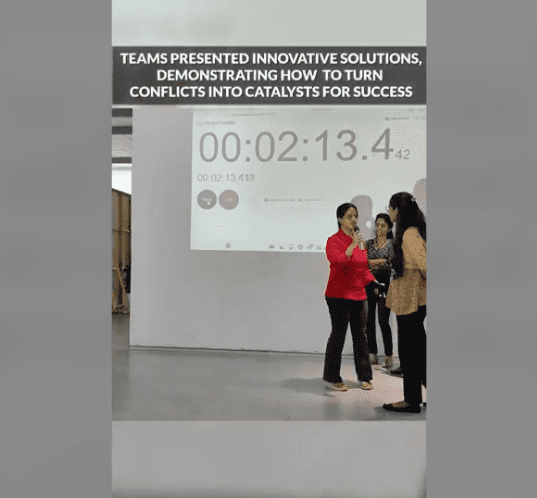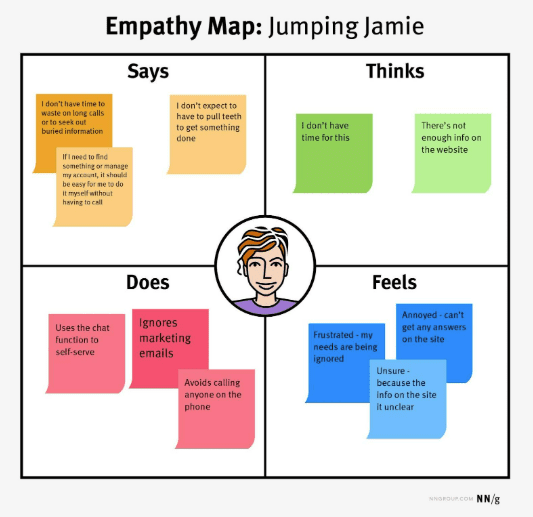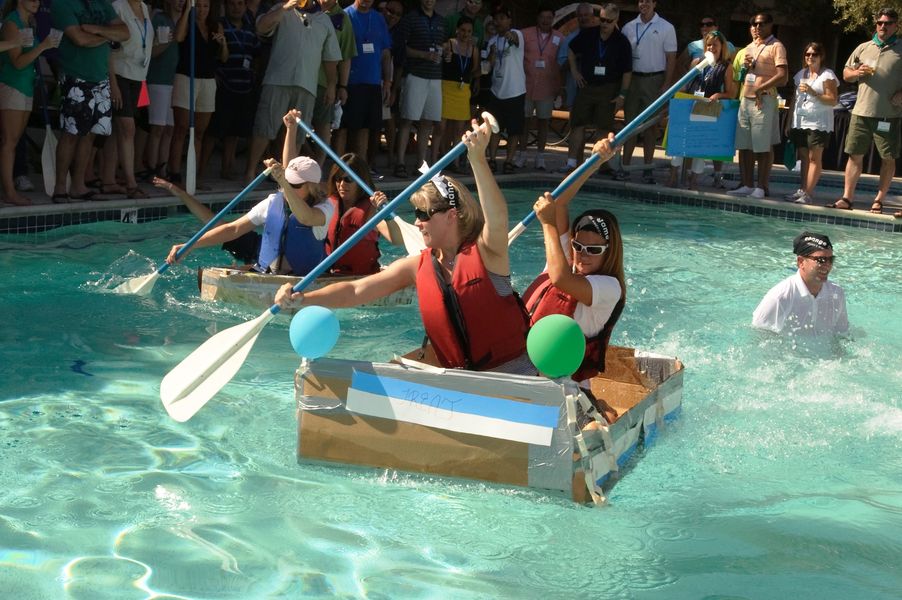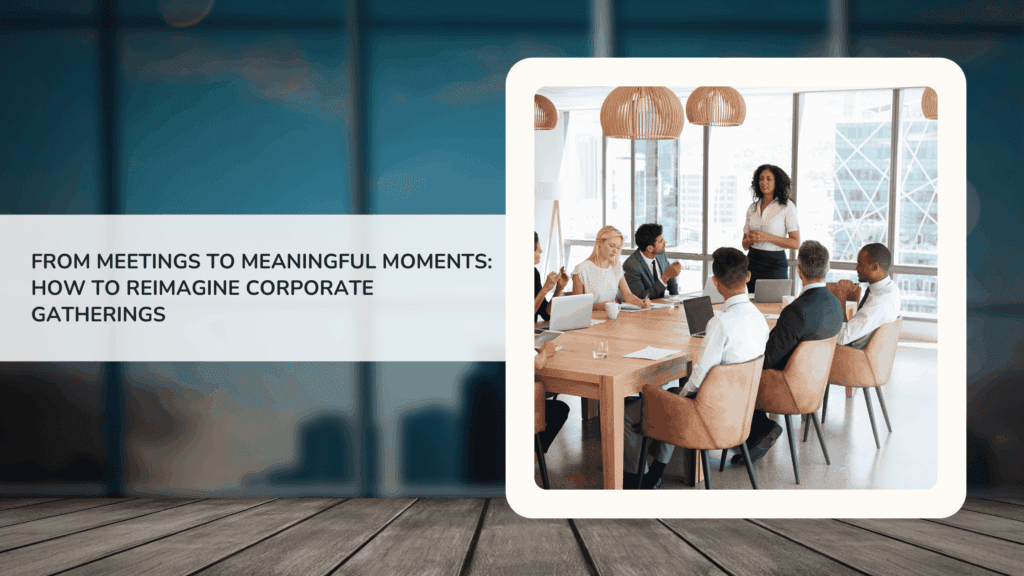In a word? Totally! To start elaborating on it comparatively, conflicts at work are like huge traffic jams. And every time you get stuck in them, you can’t move anywhere fast (or can’t move at all). And then, you hear loud beeping (when co-workers are arguing their lungs out at each other) or even swearing… And if it’s a remote or hybrid team conflict, they’re probably attacking each other with rude emojis.
But it doesn’t have to be so.
You can actually learn how to turn these roadblocks into stepping stones for corporate growth. For that purpose, we’ve rounded up the best problem-solving team-building activities that will help you train your employees’ conflict resolution skills and elevate trust higher than ever.
Yet, before adding them to your list, see how workplace disagreements can slow down teams or even fully block businesses from growing and prospering.
Table of Contents
- Why Conflicts at Work Are Detrimental to Team and Business Development
- Top 7 Problem-Solving Team-Building Activities to Promote Conflict Resolution
- Never Let Any Conflicts Stall Your Team’s Progress
- Author Bio
Why Conflicts at Work Are Detrimental to Team and Business Development
They Poison the Corporate Culture with Toxicity
Even the smallest disagreement or clash of interests/values between colleagues gives enough sparks to fire up negativity at work. And the latter is incredibly contagious. It poisons the overall team atmosphere and facilitates a toxic organizational culture with:
- Constant anxiety and uneasiness: As if walking on eggshells, employees are worried about the next possible blow-up (a workplace conflict).
- Passive aggression: Eye rolls, exaggerated sighs, or other passive-aggressive body language elements.
- Distrust: Colleagues regard each other as potential enemies who can backstab at any second.
- Broken communication and poor collaboration: Dried-up conversations, quiet chats (once buzzing with ideas or just hilarious memes), turned-off web cameras, and… as you might be guessing, almost zero teamwork.
Indeed, when employees are at odds and can’t pass each other in the hallway (or in the Slack channel) without throwing metaphorical daggers at each other, their colleagues might be suffocating with tension hung in the air, as if before a thunderstorm, and experiencing higher stress levels.
They Cause Mental Burnout, Even If Workers Look Physically Well
Due to emotional drama (whether it’s an awkwardly tense silence or a roaring hurricane of verbal accusations), workplace conflicts particularly undermine the mental pillar of employee well-being, even if the physical one seems stable and solid.
Standing on guard of people’s health and wellness, Wang Dong, Founder of Vanswe Fitness, notes, “Even if your employees can sweat out workplace tension on treadmills or punch it out on boxing bags, they still have to work it out in their minds. But if this pressure remains unnoticed and stress becomes too unbearable to cope with, they may become emotionally and mentally burned out. And let’s face it—burnout is much harder to notice and monitor than any physical activity with a fitness tracker.”
They Waste Employees’ Time and Cost Businesses Billions
Everyone loves metrics and KPIs when they clearly demonstrate surges in employee productivity and business growth, right? But the following numbers around workplace conflicts stalling progress are the kind you’d want nowhere near your team’s dashboard:
- People spend an average of 4.3 hours/week handling workplace conflicts. (That’s roughly one hour a workday—gone!)
- Companies lose over $3,200 in productive hours per worker yearly.
- One in five employees (18%) saw project failures as a direct consequence of conflicts at work.
In light of this, Andy Wang, Marketing Manager at Skywork.ai, compares a workplace conflict to a “productivity and budget black hole.” He further notes, “When people are involved in a workplace conflict, they get trapped in a mentally endless loop of who said what and how to respond. At the end of the day—or, more exactly, year—it spirals into failed projects and wasted work hours and budgets.”
They Shove People to the Quitting Edge, Often Appearing Behind Sick Leaves and Absenteeism
First, there goes a conflict, and then the employee doesn’t go to work at all, on sick leave or not. Or worse, the staffer eventually quits. Actually, 40% of employees leave their jobs due to unhealthy conflicts at work.
So, a high number of sick leaves and absences are among the subtle signs of a conflict. It pushes workers toward the exit door with the shiny and irresistible “Quit” button, encouraging them to never come back again, whether it’s an office or a remote/hybrid workspace. As a result, you see a higher turnover rate, which stalls progress in your department and company overall.
Top 7 Problem-Solving Team-Building Activities to Promote Conflict Resolution
1. “My Worst Conflict Ever” Storytelling Circles
Just like gratitude circles, as a popular mental health activity in the workplace, you can sit in a storytelling circle with the topic “Conflicts” for problem-solving team building.
Here’s the roll-out. In turn, team members tell about the toughest personal/professional clashes they’ve ever had and ask the group, “How would you have resolved this conflict?” Then, their co-workers suggest conflict resolution ideas.
This exercise not only improves conflict resolution skills but also sharpens employees’ problem-solving skills in stressful situations.
In the words of Peter Čuček, Owner of Tuuli, “A conflict storytelling circle is more than a simple story exchange between colleagues. It is a powerful trust-building exercise for the whole team. You are transparently opening up and exposing your vulnerabilities. That is why it is necessary to express understanding and compassion first, without criticism, and only then look for possible ways out and grow together by learning from each other.”
2. Conflict De-Escalation Sessions/Workshops
Do your employees know how to take a pause and cool down when they disagree with colleagues or even calm the storm, that is, de-escalate conflicts of others at work?
If not yet, it’s time to teach them. Here are several ideas for problem-solving team-building activities amid such training sessions or workshops:
- Red flagging → Draw a map with the red flags of conflict escalation and choose de-escalation methods for each.
- Empathetic language (including body language) exercise → Generate as many empathy-filled phrases and non-verbal cues as possible.
- The heat-meter game → Use a giant “conflict thermometer” to rank real or imaginary conflicts on a scale and discuss how to lower the “heat.”
- Cooling-down kit creation for stress management → Create coping strategies, such as breathing exercises, journaling, meditation apps, and so on.
- Rewriting challenge → Rewrite angry messages into neutral-sounding ones in a collaborative rather than conflicting tone.
For example:
The Axis Trustee team played a game of speedy problem-solving and turning conflicts into catalysts for success during their conflict resolution workshop.

Alternatively, consider organizing Conflict Resolution Training with Outback. It’s a comprehensive skill-boosting program that teaches how to understand various viewpoints, manage emotions, and build constructive dialogues between team members, even when they don’t get along.

3. Conflict Simulations with Empathy Maps and AI Mediators/Coaches
Empathy Map
Have you tried simulating a conflict and resolving it with an empathy map?
Empathy mapping is a visual technique used to boost emotional intelligence and better understand another person’s perspective based on the think-feel-say-do (TFSD) framework.
An empathy map typically looks like a four-quadrant structure with the quadrants describing what each worker—
- Thinks: Internal thoughts, beliefs, or motivations.
- Feels: Emotions and feelings, such as frustration, helplessness, anxiety, etc.
- Says: Exact words and phrases.
- Does: Behavioral patterns and actions (or inaction).

AI-Powered Mediator or Coach
Then, your workers can simulate conflicts with artificial intelligence (AI) and learn how to solve them more effectively. Use virtual assistants or chatbot-style conflict mediators to navigate conflict resolution with AI in a hypothetical (or even real-life!) scenario.
For example:
When you rely on a virtual assistant or AI coach like Marlee, you can automatically gather cognitive + behavioral insights about each employee. By the way, they can be super-helpful when building a TFSD framework.
“Conflict resolution is a skill, not a personality trait. People can learn it, practice it, and get better. The more they practice, the faster they solve problems. Skills like this pay off in every project and relationship”, says Phillip Stemann, Lisbon Enthusiast from LisboaVibes.
4. Role Reversals
Adrian Iorga, Founder & President at 617 Boston Movers, knows pretty well how even tiny employee misunderstandings can snowball into project bottlenecks. That’s why he’s a huge advocate for role reversals in problem-solving team building.
“When you switch roles—let’s say, a sales team manager takes on the role of a sales agent responsible for client calls—this exercise forces both parties to step outside their comfort zones and look at everything from another, often opposite perspective. In my experience, when team members try walking in each other’s shoes, they learn to walk shoulder to shoulder with less tension and more trust.”
“Oh, now I get why you’re outraged every time you’re assigned a task without clear instructions.”
Or—
“Now, I can absolutely feel the deadline pressure you experience…”
That’s what your employees might understand and say after a successful role reversal.
5. Escape Rooms
Ever wondered how your team members would do being “locked” in one room with nothing but clues and a ticking clock?
To successfully escape, they need to hear and understand each crew member, quickly resolve disagreements (if any), trust each other, and collaborate effectively as a team. Only then can they get out before the clock calls game over.
At Outback, you can choose from a wide range of corporate escape rooms like these:
- Jewel Heist (Consider remote or self-hosted formats)
- The Haunting of Spencer Manor
- Mummy’s Curse (Also consider self-hosted or virtual formats)
For example:
With Outback’s help, Coca-Cola transformed a conference room into a Jewel Heist team-bonding experience for 20 employees.

6. Interactive Building Challenges
Two teams construct half a bridge each (without looking at each other’s progress) and then unite them. Do they ideally connect?
It’s actually a literal and metaphorical lesson of “bridging the gap,” which teaches team coordination in times of uncertainty, strengthens cross-team collaboration, and grows trust through shared accountability.
Employees should craft an intricate chain-reaction machine to achieve an effect of falling dominoes. It perfectly demonstrates one person’s impact on the whole group.
- Blindfold Build
One team member is blindfolded. Others give one verbal instruction at a time in turn to help their colleague build something (e.g., a puzzle or tower). It improves employees’ communication skills and mutual understanding.
- Secret Box Challenge
Prepare identical mystery boxes packed with random items (e.g., rubber bands or sushi chopsticks). Break employees into pairs. Each employee pair chooses a box (without knowing what’s inside) and tackles a specific problem with only the resources at hand.
Design, construct, and race a functional boat built with merely cardboard and basic supplies. You’ve got a high-stakes goal to reach—don’t sink. So, communicate, collaborate, trust each other, and… don’t sink!

7. Intrapreneurship Contests
Finally, how about letting your workers try an intrapreneur’s role?
Being involved in intrapreneurship, an employee becomes, kind of, a startup founder who generates and pitches new ideas and develops new products (or services), yet without launching a new brand/business. They do it in-house and solve internal innovation challenges within the company.
Leigh McKenzie, Community Advocate at Traffic Think Tank, sees an intrapreneurship contest as a friendly race track where everyone is a winner at the finish line. “No more arguments and ‘my approach vs. your approach’ clashes between co-workers. They can try both approaches as intrapreneurs entrusted to start racing as business leaders from scratch and drive their teams to success. This way, you not only redirect workplace conflicts into healthy competitions but also drive your company’s innovative potential and progress with new creations.”
For example:
Let’s take the case of ANDRITZ. The manufacturing company supports employee-led initiatives within the intrapreneurship program ANDRITZ Ventures Startup Contest.
Never Let Any Conflicts Stall Your Team’s Progress
So, is conflict stalling progress? Yes, but only if you let it be by leaving it as it is.
After all, the only thing left to argue about is what problem-solving activity to try next to improve your conflict resolution skills and build the kind of trust that moves people (and business) forward.
Contact Outback to help you choose and arrange the right event based on your corporate needs, whether it’s a formal learning session or a more informal escape room experience.
Author Bio
Catherine Schwartz is an author who specializes in employee well-being and engagement.



